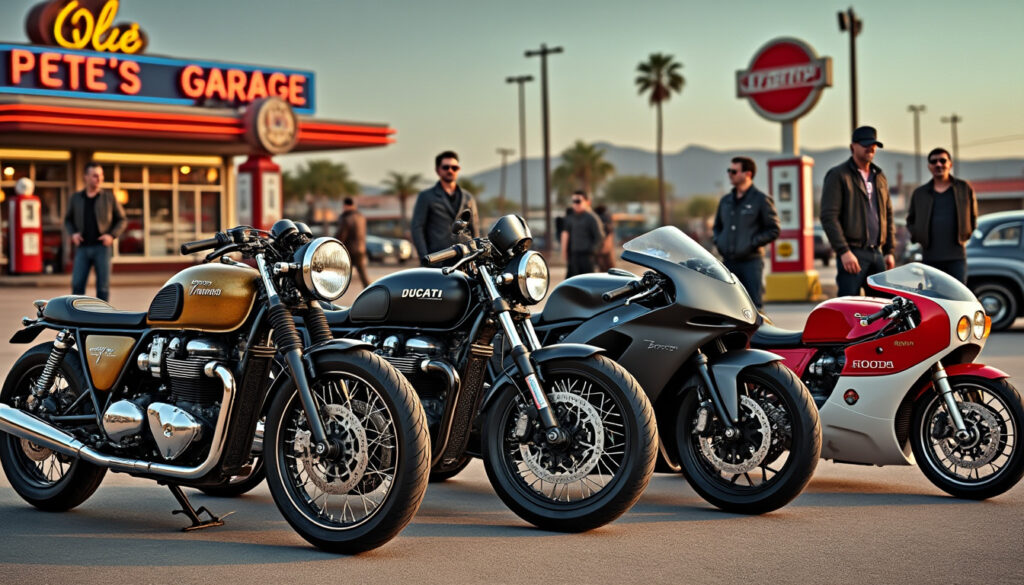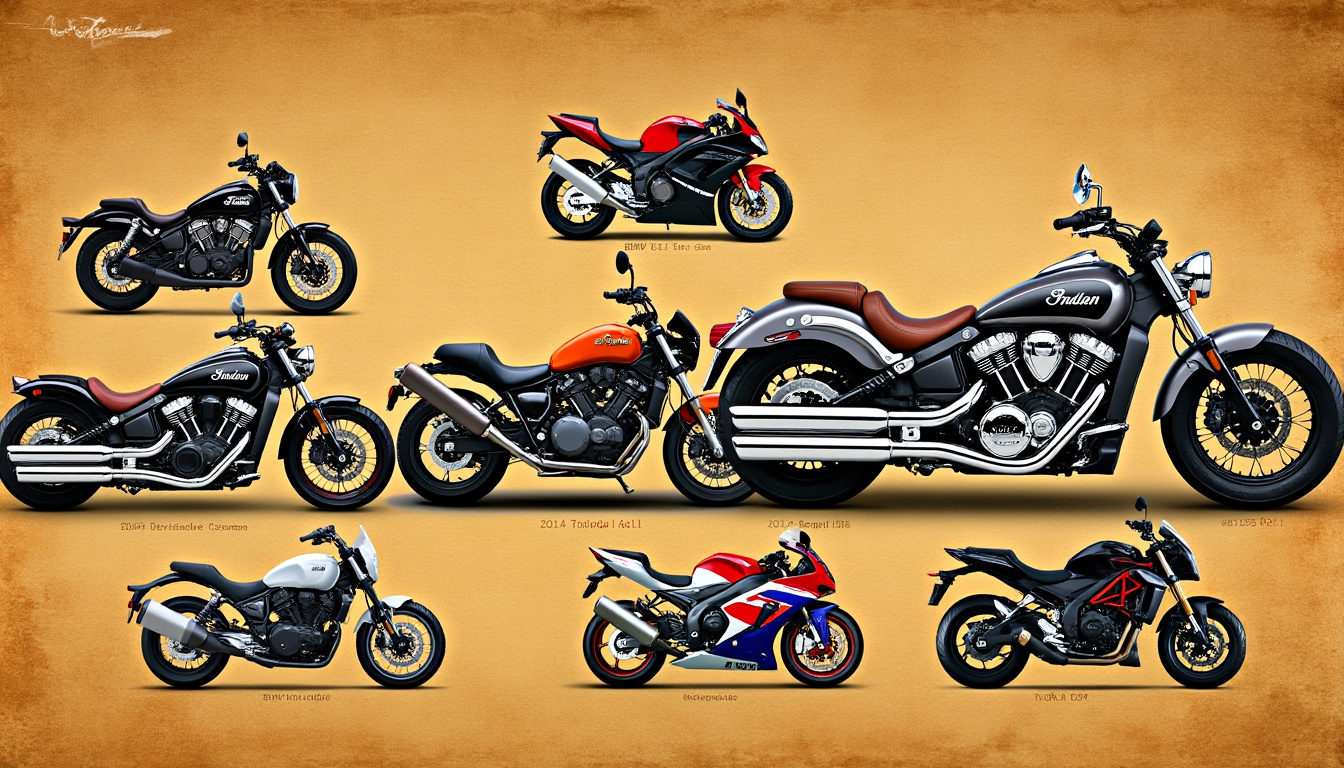the sustainability of motorcycle brands: myth or reality?

Motorcycle brands are traversing a complex era, oscillating between past glory and contemporary challenges. In this constantly evolving environment, the longevity of legendary brands is put to the test. KTM, Harley-Davidson, Honda, Ducati, BMW Motorrad, and many others face financial, strategic, and technological challenges that test their ability to endure. The question arises: can these iconic brands truly sustain themselves in the long term? Does it not depend not only on their heritage but also on their capacity for innovation and adaptability?
History of Motorcycle Brands: A Journey Through Time
Motorcycle brands not only have a rich history, but they also reflect technological evolution and societal trends. From humble beginnings to international giants, the history of these brands is marked by success. Take for example Harley-Davidson, founded in 1903, which has embodied the spirit of freedom across generations. Its legacy is based not only on iconic models like the Fat Boy or the Sportster but also on a lifestyle that attracts two-wheel enthusiasts.
Similarly, Ducati, with its bold designs and competitive performance, has captivated motorcyclists worldwide. Models like the Ducati Monster and the Panigale have become benchmarks in terms of speed and handling. This notoriety has allowed Ducati to position itself in the high-end market, attracting customers willing to invest in motorcycles that are not only high-performing but also well-designed.
To understand the cultural impact of these brands, it is essential to consider the current situation. The popularity of motorcycles Kawasaki, Yamaha, and Suzuki reflects a sector in full mutation, where consumer expectations are shifting towards greener and more sustainable technologies. For example, Yamaha recently launched hybrid models that address growing environmental concerns. This raises the question of whether all brands will be able to adapt as quickly to these new requirements.
Contemporary Challenges Facing Motorcycle Brands
The quest for longevity is endless and complex. A table can help to understand the stakes and challenges that major brands face today.
| Brand | Current Challenges | Strategies Implemented |
|---|---|---|
| KTM | Financial issues, overstock | Production reduction, price adjustments |
| Harley-Davidson | Declining sales, aging image | Launch of electric models |
| BWM Motorrad | Increased competition, necessary innovation | Investment in electric |
| Ducati | Acquisition by a large group, diversification | Launch of varied models |
These various challenges reveal a striking truth: even the most established brands are not immune to economic fluctuations, increased competition, and changing consumer mindsets. For instance, the decline of KTM in recent months has been a real shock to the industry. Despite having strong recognition, this iconic brand had to face an excess inventory of over 265,000 units at the end of 2024. The reasons are multiple, ranging from an overzealousness for innovation to poorly managed production.
The Stakes of Innovation in the Motorcycle Industry
In a world where innovation is key, the motorcycle sector is no exception. Brands must reinvent their products to meet new market expectations. Today, motorcyclists are looking for not only performance, but also aspects like connectivity, environmental respect, and new technologies.
Brands like Honda and Yamaha have been among the first to embrace this trend. Honda, for example, has invested heavily in the development of electric and hybrid motorcycles, seeking to bridge tradition and modernity. This allows them not only to address environmental concerns but also to attract a new clientele focused on sustainability.
- Integrated navigation systems
- Advanced safety devices
- Environmentally friendly engines
In light of these evolutions, it is crucial for historical brands not to rest on their laurels. Even giants like BMW Motorrad and Triumph are called to evolve. Resistance to change could lead them to stagnation or even oblivion.
Iconic Models and Their Impact
To understand the importance of innovation, it is interesting to examine some recent models that have had a significant impact on the market. Take the Ducati Panigale V4, which has redefined standards in sports performance. This model has been highly successful, blending advanced technology with refined aesthetics. By producing motorcycles that meet the needs of enthusiasts as well as those of new motorcyclists, Ducati has positioned itself as a key player.
Brands are also trying to integrate digital technologies into their production. Triumph, for instance, has launched motorcycles compatible with mobile applications that allow motorcyclists to track their performance and access connectivity services. This helps build a community of engaged and loyal users.
The Perception of Motorcycle Brands: A Key Point
Beyond economic challenges and innovation, the perception of brands plays a crucial role in their longevity. While a name like Harley-Davidson evokes the idea of a free and adventurous life, others, like Kawasaki and Yamaha, are often associated with performance and motorcycle sports. This perception directly influences sales and customer loyalty.
A key element to analyze is the phenomenon of "nostalgia" in the motorcycle industry. Many brands capitalize on their heritage to attract new customers. For example, Moto Guzzi relies on its history and retro design to appeal to vintage enthusiasts. By offering models with classic lines, they manage to create a strong message based on brand identity.
Comparison of Brand Perceptions:
| Brand | Brand Image | Target Audience |
|---|---|---|
| Harley-Davidson | Freedom, adventure | Adventurers, motorcycle culture enthusiasts |
| Ducati | Performance, sportiness | Sporty motorcyclists |
| BMW Motorrad | Luxury, innovation | Professionals, technology enthusiasts |
| Kawasaki | Resilience, performance | Young people, thrill seekers |
Social media has amplified this phenomenon, thus facilitating connections between enthusiasts. This has allowed some brands to reinvent themselves and strengthen their image while attracting a new generation of motorcyclists. Suzuki, for example, uses these platforms to promote its innovations and interact directly with its customers. Digital strategies are thus becoming an essential tool for the perception of motorcycle brands.
An Uncertain Future for Motorcycle Brands
As we move towards a future full of challenges, it is essential to examine how motorcycle brands will adapt. The rise of Chinese manufacturers, the growing demand for electric motorcycles, and the evolution of regulations are among the factors redefining the landscape of the industry.
Historic brands like Triumph and Kawasaki find themselves facing renewed competition. Manufacturing quality and innovation are no longer sufficient if they are not accompanied by a modern customer approach. The strategic choices made today will determine which brand will manage to establish itself sustainably.
New Brands on the Market
The motorcycle landscape has seen the emergence of many recent players. Brands like Benelli and Moto Morini have captivated an audience by mixing tradition and modernity. The growing popularity of these new brands serves as a reminder that innovation must be at the heart of the strategy to survive.
- Competitive pricing
- Models with modern design
- Rapid adoption of green technologies
It is therefore clear that the longevity of motorcycle brands, whether historical or emerging, cannot be achieved without a capacity to innovate, adapt to market changes, and respond to new consumer expectations.
The challenge remains immense: will these brands manage to navigate the market's ups and downs while preserving their heritage? The future promises to be enlightening, as there is no doubt that the sustainability of motorcycle brands is a complex issue, where each player will have to prove its viability in a sector in full mutation.

Source: www.caradisiac.com
Leave a Reply


Articles relatifs